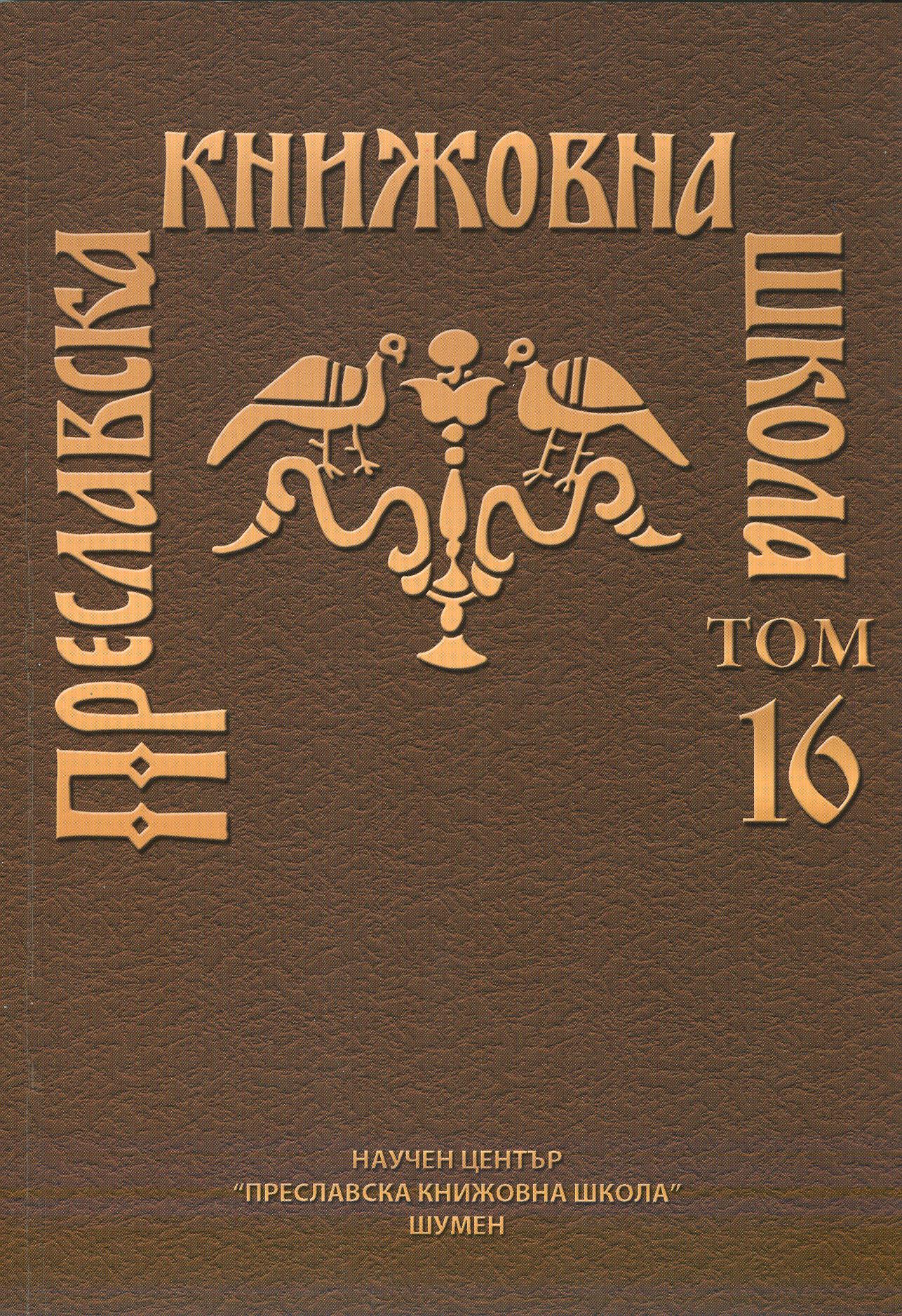ПОТИРИТЕ ОТ НОВГОРОД В АВТОГРАФСКИ КОНТЕКСТ
THE CHALICES FROM NOVGOROD IN AN AUTOGRAPHIC CONTEXT
Author(s): Zarko ZhdrakovSubject(s): History, Language and Literature Studies, Cultural history, Middle Ages, 6th to 12th Centuries, Philology
Published by: Шуменски университет »Епископ Константин Преславски«
Keywords: chalices; Novgorod; Tsar Peter
Summary/Abstract: The gilt silver chalices (100, 101) in the treasury of the Novgorod Cathedral "St. Sofia" not only have liturgical inscriptions but they also have ktitor’s and authographic dedications dated from 962 belonging to the Masters Costa and Bratil. They are decorated with vines and palm trees in the same way as seen in the Treasure of Khan Asparuh (681-701) from Nagi Saint Miklos. The niello technique indicates that these were provincial masters who had calligraphy skills with the Cyrillic alphabet, and the ones who created the Preslav ceramic icons. Paleography shows that there was an early writing practice used by the Bulgarians with runic habits influenced by Glagolitic alphabet – e.g. the letter [н] in неѧ, аминъ in the year with reversed inclination of the connecting line, reclining letter[ф]. The grammatical ending for the dative case –ови in the name Flor occurs in the Glagolitic manuscript of Konstantin of Preslav in Novgorod, whereas, the invocative cross with grapheme of the Glagolitic letter "азъ" is witnessed in the cup of the great Zhupan of Bulgaria by the name of Sevin. Influenced by the Glagolitic alphabet are also [е] in есть (Zograf and Marianus Gospels) instead of [ѥ], also [ѧ] in неѧ and моѧ (Miroslav Gospel), [ѩ] in оумрѩ (Zograf and Ostromir Gospels) instead of [іа], etc. An archaic feature is also the letter alpha in the name of Constantine and the unusual way of writing the Jewish name Maryam as Ěàðüý - cf. âüçëüý at the Marian Gospel. The expected Second Coming at the end of the tenth century gives reason to interpret the year 6459 of the Creation (= 962 from Christ’s birth according to the Amartol era) with God's Salvation: + ͠Ѕ ͠Ѳ У (Σότηρ Θεού), where the letter [н] has the numerical value of 50 and is recorded in a strange way above the line. Those who had ordered the chalices must have been Tsar Peter (927 - 969) and his wife Maria - Irene (927 - 963), whose patrons St. Peter and the Virgin Mary were depicted next to the images of Jesus Christ and St. Anastasia (St. Barbara in chalice 101). The absence of the king's title matches with the Eucharistic nature of the ktitor's inscription and meets the official address of the Byzantines towards the Bulgarian Peter or even just Peter. In their private correspondence the Bulgarian rulers were also present only with their first names – e.g. the golden ring-seals of Kubrat and Kaloyan. However, indirect information about the title gives the ending -yl in the name Peter (chalice 101), which expresses the concept of the sacred homeland and reminds that the chalice belongs to the statesman Peter as it was with Tsar Boril (Byor 'wolf ') - cf. Turk. el / il 'hand, race, nation, homeland, country'. The name Petril is not typical for the Russian language environment, nonetheless, it was found in Bulgaria (e.g. the voivoda Petrilo from XI c.) which proves that there was an Old Bulgarian onomastic tradition - cf. Bratil, Stanil, Momchil, the fortress Batil - Boyana. It seems that Tsar Peter had a second wife named allegorical Barbara (chalice 101), which would have meant that the bigamy was in practice even after the ban of the Pope or it was either that the king married after the death of Mary. The image of St. Anastasia could be assumed as an allegory of the resurrection of the queen.
Journal: Преславска книжовна школа
- Issue Year: 2016
- Issue No: 16
- Page Range: 249-261
- Page Count: 12
- Language: Bulgarian

